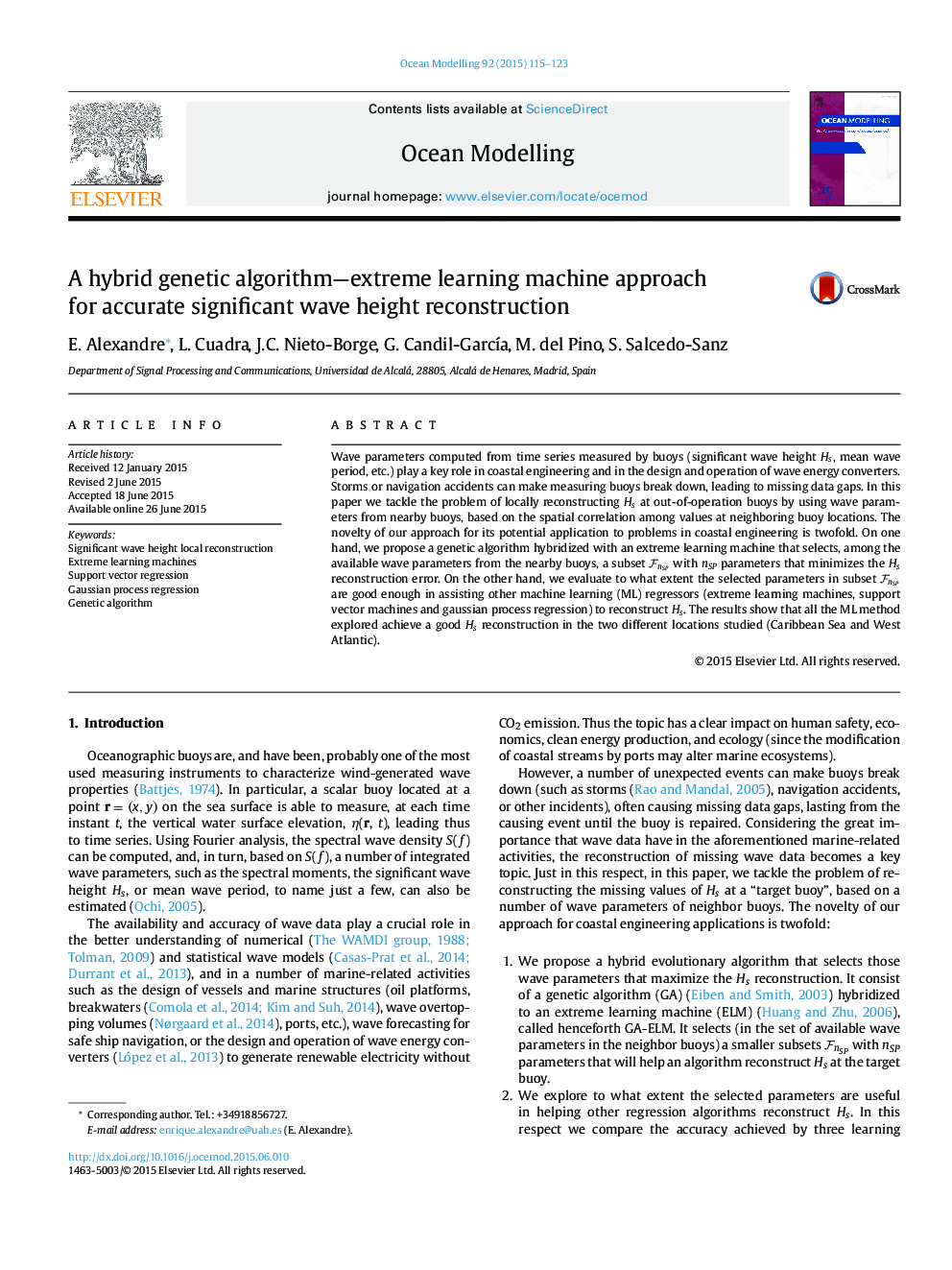| Article ID | Journal | Published Year | Pages | File Type |
|---|---|---|---|---|
| 6388105 | Ocean Modelling | 2015 | 9 Pages |
â¢Significant wave height data in buoys are reconstructed with machine learning techniques.â¢A genetic algorithm hybridized with an extreme learning machine is proposed.â¢Two different scenarios are considered to test the system: Caribbean Sea and West Atlantic.â¢A prediction error below 0.5 m is obtained for both scenarios studied.
Wave parameters computed from time series measured by buoys (significant wave height Hs, mean wave period, etc.) play a key role in coastal engineering and in the design and operation of wave energy converters. Storms or navigation accidents can make measuring buoys break down, leading to missing data gaps. In this paper we tackle the problem of locally reconstructing Hs at out-of-operation buoys by using wave parameters from nearby buoys, based on the spatial correlation among values at neighboring buoy locations. The novelty of our approach for its potential application to problems in coastal engineering is twofold. On one hand, we propose a genetic algorithm hybridized with an extreme learning machine that selects, among the available wave parameters from the nearby buoys, a subset FnSP with nSP parameters that minimizes the Hs reconstruction error. On the other hand, we evaluate to what extent the selected parameters in subset FnSP are good enough in assisting other machine learning (ML) regressors (extreme learning machines, support vector machines and gaussian process regression) to reconstruct Hs. The results show that all the ML method explored achieve a good Hs reconstruction in the two different locations studied (Caribbean Sea and West Atlantic).
